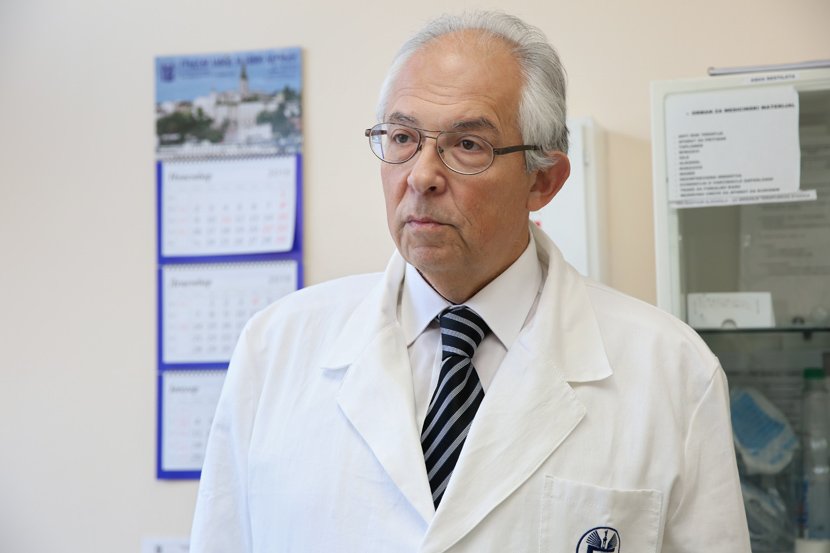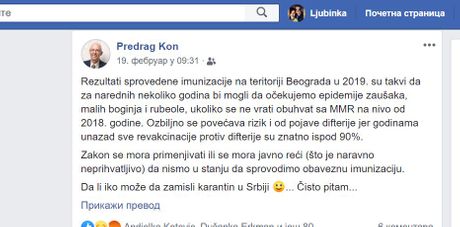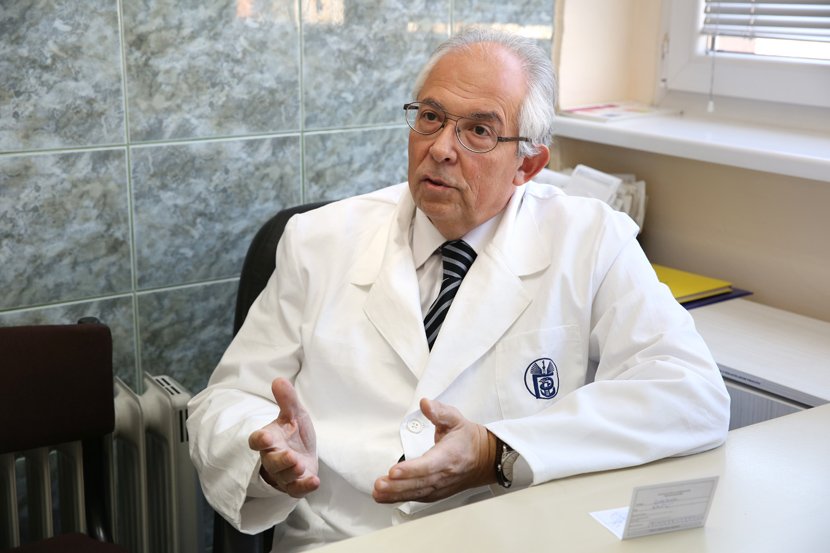Dr. Kon warns: Epidemics of measles, mumps and rubella loom as level of MMR vaccination drops
"The results of the immunization conducted in the territory of Belgrade in 2019 are such that we could expect epidemics of mumps, measles and rubella in the next few years, unless the coverage with MMR returns to the 2018 level," said Dr. Kon

The coverage with MMR vaccination against measles, mumps and rubellas has decreased again over the past year, and unless it goes back up, Serbia could again face epidemics of these diseases.
Chief physician Dr. Predrag Kon, epidemiologist with the Belgrade City Institute for Public Health, warned about this on Facebook, referring to the vaccination data from the Serbian capital.
"The results of the immunization conducted in the territory of Belgrade in 2019 are such that we could expect epidemics of mumps, measles and rubellas in the next few years, unless the coverage with MMR returns to the 2018 level," said Dr. Kon.
He added that the risk of diphtheria is also seriously increasing.

"The risk of diphtheria has seriously increased, because for years all diphtheria revaccinations have been well below 90 percent. The law must be applied or it must be stated publicly (which is of course unacceptable) that we are unable to carry out mandatory immunization. Can anyone imagine a quarantine in Serbia... Just asking...," Dr. Kon wrote.
In order not to have a repeat of 1997, 2007, and 2017, when we had outbreaks of measles, it is necessary for vaccination coverage to be above 95 percent.
According to the data of the Institute for Public Health of Serbia "Dr Milan Jovanovic Batut" vaccination with MMR in the territory of Serbia in 2018 was carried out with coverage of 93.4 percent, while in 2017, when the epidemic occurred, it amounted to only 85.2 percent.
The biggest measles epidemic in Serbia happened in 1997, when about 4,000 people got sick and seven died. Ten years later, another epidemic took place, spilling over from marginalized groups in Vojvodina onto the general population, with an estimated 380 people infected.

Last time, measles hit Serbia in 2017 and 2018. That time, 5,318 people got sick, while 15 died.
The last case of measles in the territory of Serbia was recorded in Bor last June.
Vaccination against measles in Serbia began in 1971 with the use of a monovalent vaccine. In 1981, the use of the combined measles and mumps vaccine began, while the use of the MMR vaccine (measles, mumps and rubella) started in 1994.
At the same time, starting in 1994, a second dose of MMR vaccine began to be administered - first at the age of twelve, and from 2006 at the age of seven - given that about 5 percent of those vaccinated with a single dose of the vaccine do not develop measles immunity.
VIDEO: What are vaccines and how do they work?
(LJ.R.)
Telegraf.rs zadržava sva prava nad sadržajem. Za preuzimanje sadržaja pogledajte uputstva na stranici Uslovi korišćenja.




